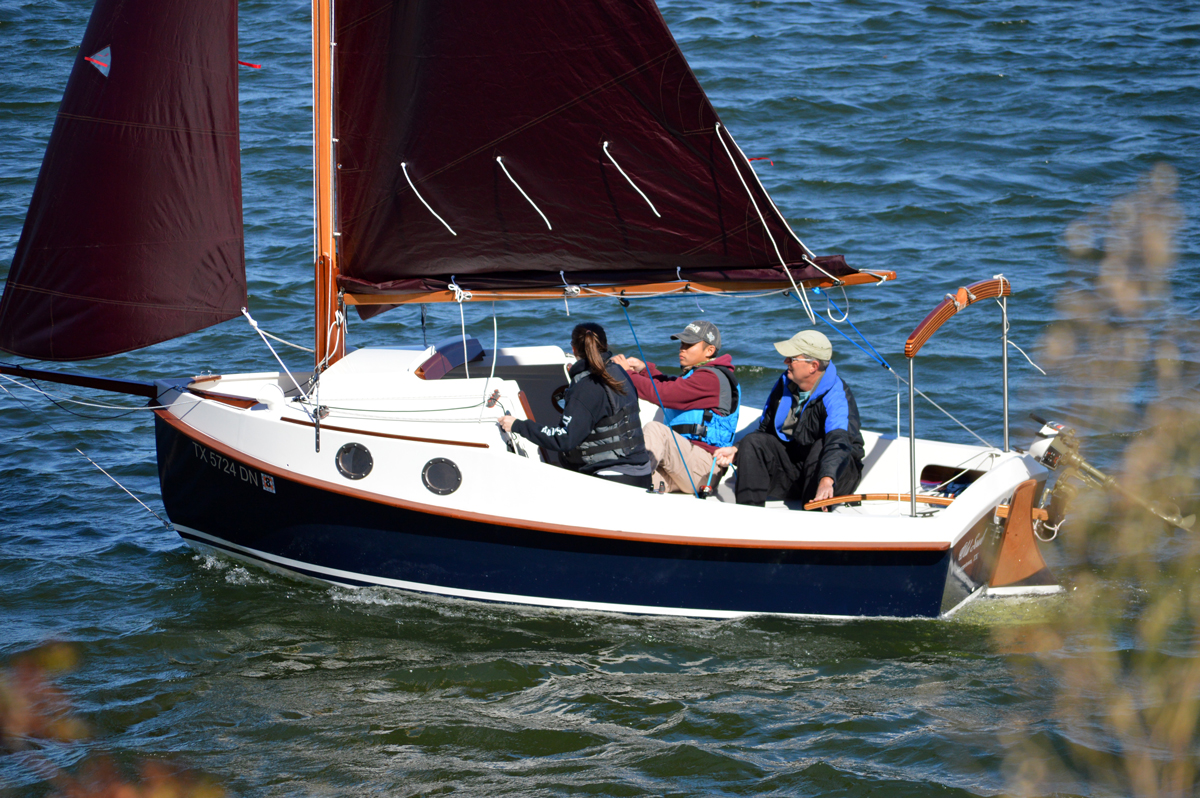 |
| Gluing Brush w/Epoxy Plug |
I want to start with a plug for the gluing tools from Rockler Woodworking. They have lots of "cool tools" but these are some of my favorites. In this shot the thickened epoxy plug was simply "flicked" off the brush end of the tool after it had cured. The other end of the tool has a spade tip which is useful for cleaning up epoxy runs and squeeze-outs. I also use it for mixing epoxy. The kit I purchased also has a toothed glue spreader and mixing tray. The cured epoxy is easily removed from them as well. These tools are advertised for use with regular glues, but I was happy to discover they also work well with epoxy.
 |
| Dynel Cloth Filled with Thickened Epoxy |
Here the dynel cloth I put on the leading edge of the centerboard has been filled with silica-thickened epoxy. The silica made the epoxy flow to a smooth finish--which you can't really tell from this picture
 |
| Floor Joists and Stringers |
While waiting for the centerboard work to cure I glued stringers to the plywood floor joists. You can see a few of them here. The stringers are to provide a surface to attach the floorboards to. The two long joists will go all the way across, while the half-joists will go on either side of the centerboard trunk. For proper balance and pointing ability the centerboard trunk must intrude into the cuddy.
 |
| Centerboard with Graphite/Epoxy |
While the joists are curing I have coated one side of the centerboard with two coats of epoxy and graphite mix. This will make the board very slick and less prone to scratches and dings. The board is very glossy and if you click on the picture to enlarge it you will see some small bumps caused by bubbles. The bumps will be sanded out very easily, then the entire board will be sanded as smooth as possible. It will no longer be glossy after the sanding, but it will be very smooth, as "smooth as marble" according to the instructions. They sanded their board all the way down to 400 grit on the prototype so I will do the same. This will result in what I think will be a very beautiful board, that will never be seen again until the boat is scrapped--many, many years from now I hope
 |
| Skerry Rudder and Daggerboard with Graphite/Epoxy |
Winter repairs on the Skerry must also continue. I did some sanding and touchup work on the hull, and decided to give the epoxy/graphite treatment to the daggerboard and bottom part of the rudder. These two parts will be exposed to the sun from time to time, so after all the sanding is finished they will get a couple coats of marine varnish for protection from UV rays.






Thanks--very nice of you to say so.
ReplyDelete